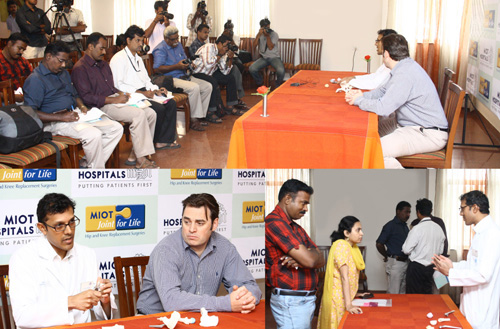Past events at MIOT
DELTA MOTION CERAMIC HIP REPLACEMENT SURGERY - Latest development in Hip Replacement Surgery - Press Meet - 05 January 2011
Fully cemented metal on polyethylene total hip replacements have continued to be the norm in most countries of the world. These implants when used in young and active people can rapidly loosen within ten to fifteen years. Further, patients with these implants are discouraged from sporting activities and sitting on the ground.
These implants are also difficult to revise after they become loose. Due to these problems, “hard on hard bearings” started becoming popular. Metal on metal continues to be very popular in young people. This is because they can go back to full activity and in certain cases it is easier to revise.
However there have been several problems that have recently come up regarding the use of metal on metal and published in scientific journals. The liberation of metal ions when one metal surface moves on the other is in very high concentrations in the first year and a half and continues to remain in the blood.
Therefore metal on metal implants are present in the breast milk and can affect the chromosome. These implants are therefore not recommended in young people who are wishing to have children and in women intending to breast feed. Further, we now know that these metal ions can produce pseudo tumours and also allergic reactions. The allergic reaction to the metal ions is more common in women. For these reasons a large number of metal on metal implants fail and need to be revised within five years itself.
Ceramic does not produce any debris and is therefore a safe bearing surface. The original alumina ceramic was thought to be slightly weak. The newer delta ceramic is extremely strong and is used in the ship building and automobile industry. The latest ceramic comes in a bigger size which gives it instant stability.
As a result of this the patient can look forward to an implant that produces no debris, that has the capacity to last a lifetime and can go back immediately to fully normal activity. The combination of strength from delta ceramic and mobility from the large sized bearing surface have given it its name, “Delta Motion”.







